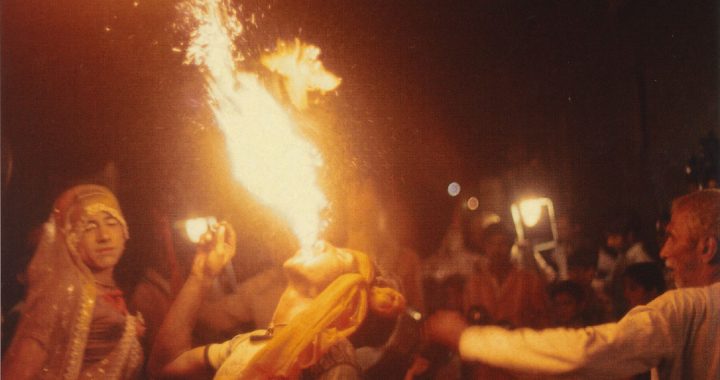“Once a journey is designed, equipped and put in process, a new factor enters and takes over. A trip, a safari, an exploration, is an entity different from all other journeys. It has a personality, temperament, individuality, uniqueness. A journey is a person in itself; no two are alike. And all plans, safeguards, policing, and coercion are fruitless. We find after years of struggle that we do not take a trip; a trip takes us.” John Steinbeck, Travels with Charley
A trip that would straddle the African continent north to south, from London to Cape Town, was unexpectedly aborted. I found myself swept along a journey of a completely different kind. This would stretch across two continents as well, but moving west to east, from London to the final destination New Delhi, India. It would take approximately four months, moving slowly, and making stops in some Middle Eastern countries and the Asian sub-continent.
The year was 1976. The vehicle was The Magic Bus. It was to take me on an exotic, overland odyssey, in the days when the route through Central Asia was open. And I was about to learn the meaning of Steinbeck’s words. Indeed I did not take the trip; the trip was about to take me.
THE MAGIC BUS
Istanbul, Turkey, 1976
First stop – Istanbul – a blend of the Europe we were leaving and the Asia we were soon to meet, the wide, grey Bosphorus River marking the division between the two.
The cavernous Blue Mosque was our first introduction to Islam, the faith that would follow us through much of our journey.
This was also our first taste of the bustling Asian markets. We developed the habit of taking long, lingering forays into markets and residential areas, where life on the streets unfolded with all its unpredictable delights.
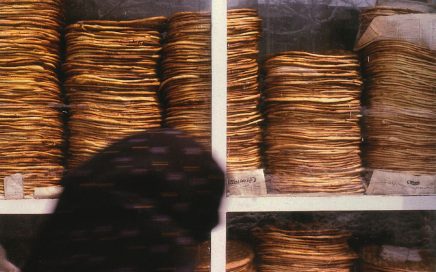
The veil of Islam followed us nearly for the duration of our four-month journey, as did the ubiquitous stacks of unleavened bread.
Tehran, Iran, 1976
Second stop on the Magic Bus – Tehran, in the era of the Shah of Iran.
The main road to the city was lined with billboards advertising every manner of product from American companies, often featuring scantily clad women as the draw. This was an Iran in total contradiction to the austere and tightly controlled Iran of today.
A young Iranian fellow somehow gained access to our bus; and, appointing himself our guide, proceeded to painstakingly express the wish to assist each and every passenger – most of whom ignored his sincere gestures, handing out home-cooked food prepared by his mother, and refusing payment for his services.
Walking the streets one night, we met a different brand of Tehranese man. Dressed in jeans and leather jackets, they seemed worldly, rough and restless, but nevertheless called out greetings as we passed by.
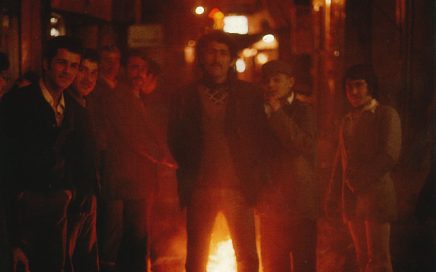
Tehranese men warm themselves in an alleyway fire.
Herat, Afghanistan, 1976
The brand new Magic Bus broke down close to the Iranian-Afghan border – the diagnosis a seized engine.
We continued by local transport; and a combi picked us up in a stark no-man’s land where all that could be seen for miles around were hundreds of sheep attended by one lone herdsman.
We were on the way to Herat – a tree-less medieval town of window-less mud houses, soaring minarets, and phantom-like women dressed in purdah – Islamic veils so dark and dense, so completely covering face and body, with only a small net in front of the eyes for vision, so as to make even the slightest interaction impossible.
The combi passengers were incessantly curious about these strange-looking humans, but nevertheless friendly.
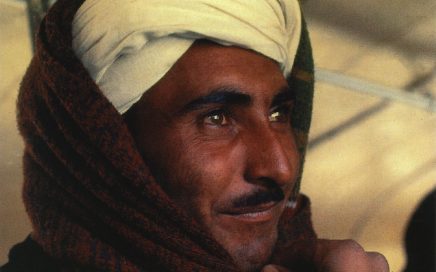
Passenger on the combi ride to Herat.
Kabul, Afghanistan, 1976
Onto Kabul – an inscrutable, intimidating city that provoked anxiety and tension, with traditionally dressed, turbaned men openly toting shotguns and swords.
The spring thaw saw the mountains in the distance losing their snow, and the dank, dirty streets full of slush and mud.
The festival of Eid-ul-Sitr exploded upon us. It marked the end of the month-long Ramadan fast. Huge crowds of people gathered on open fields and surrounding hillsides for sports competitions, children’s games and rides, special holiday foods, and feasting and merriment.
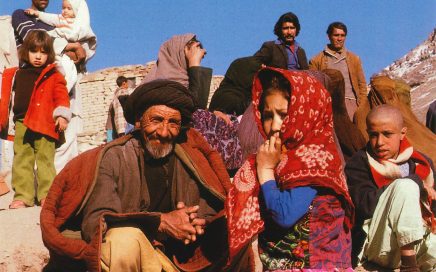
This forlorn little girl was not in a festive mood, despite her comforting grandfather near her.
Pakistan, 1976
A hair-raising bus ride through the towering Hindu Kush Mountains left hearts paralysed and tummies hanging upside down.
Down into the green and fertile agricultural lowlands. Faces – and races – changing, to something more familiar.
The smell of burning wood gave way to the smell of curries and barbequed tambouri wafting through the choked and full-of-people streets. And the Pakistani women, donning a less oppressive veil of Islam, smiled and relaxed in the bustling market lanes.
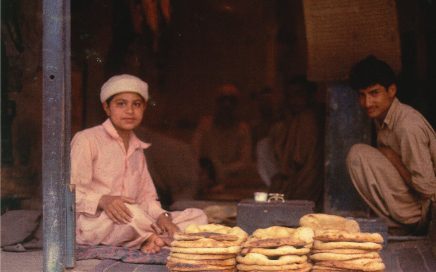
Young bakers tend to the aged, underground mud and brick ovens.
Agra, India, 1976
Final destination, India, where we arrived four months later. The Indian ladies, clad in beautiful, colourful saries billowing in the breeze, offered reprieve from the dreary, oppressive dress of the countries that had come before.
Agra presented the vision of the sublime Taj Mahal, where we felt uplifted, nearly hypnotised, by the chanting of mantras hauntingly echoing in soulful refrain through the marble halls and bulbous dome of this shrine to love.
The Islamic Shah Jehan built the mausoleum in the 17th century as the final resting place for his wife, Mumtaz Mahal, who died giving birth to their fifteenth child. The grief-stricken shah had vowed to build her a memorial surpassing anything else the world had seen.
It took 17 years and 20,000 labourers and skilled craftsmen from Turkey, France, Italy and Persia to fashion the mausoleum. The elegant minarets outside and the gently curving arches inside perfectly complemented its crowning glory, the great marble dome.
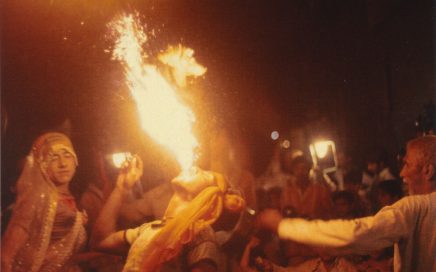
The intense emotion surrounding the viewing of the Taj Mahal was mirrored in a Hindu festival we chanced upon one evening, replete with procession and fearless fire-blower.
© copyright: Linda Pfotenhauer
Photographs by Allen Pfotenhauer
Excerpted from the book Reflections, author Linda Pfotenhauer
